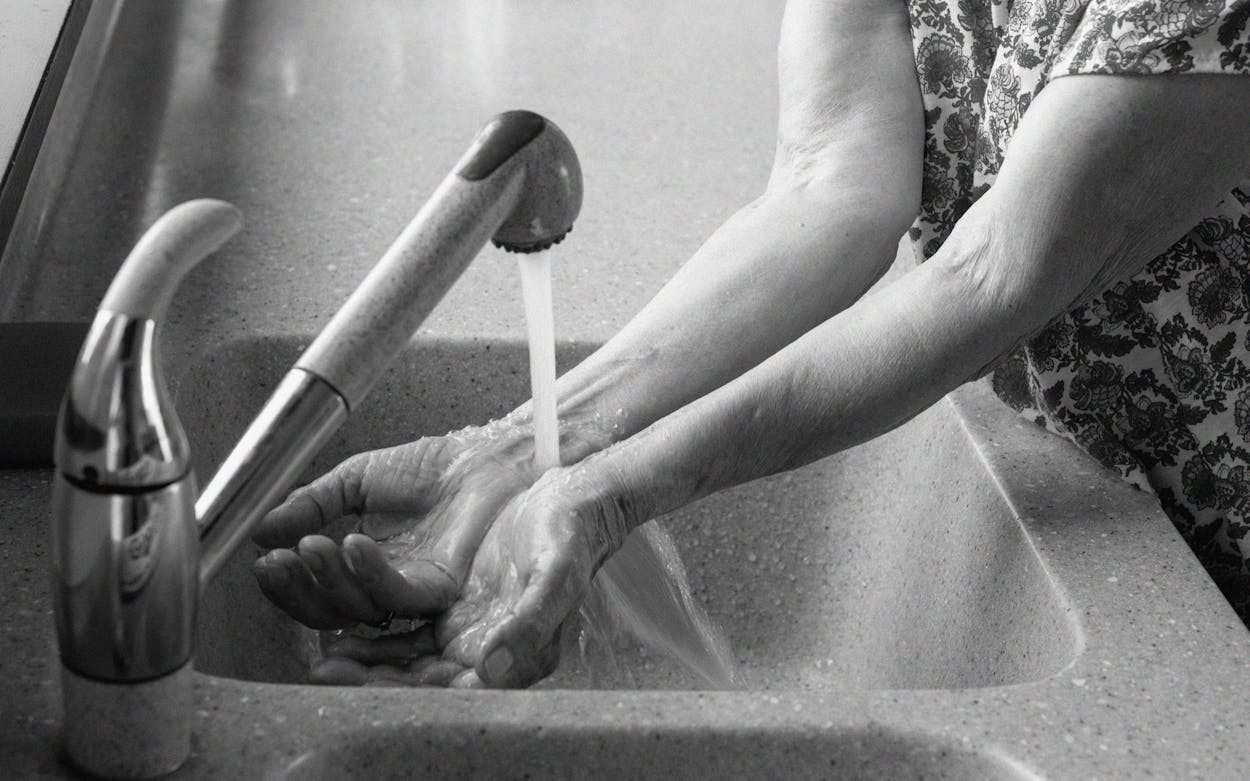It’s real, real hot in Texas right now. Both May and June saw a record number of 100-degree days across the state (24 of them in Del Rio in June, and 17 in San Antonio, for example), and July isn’t looking to be much nicer. In our attempts to cool ourselves down, we’re straining our notoriously unreliable electrical grid. The Electric Reliability Council of Texas, which manages the state’s grid, has announced that demand for electricity might reach record highs Monday, that we should all conserve energy, and that we might see rolling blackouts. In a press release, ERCOT said that “no system wide outages are expected,” but it asks Texans to “voluntarily conserve electricity, Monday, July 11 between 2-8 p.m.”
Texans are used to fixating on the weather, but we need to shift the conversation from how to endure the heat to how to survive it. Austin, Dallas, El Paso, Fort Worth, Houston, San Antonio, and smaller towns across Texas have opened multiple cooling centers so that residents can stay safe during the hottest parts of the day. Additionally, the Salvation Army has set up cooling centers at its outposts around the state. Resources vary from county to county, so residents are encouraged to check with local government.
Many cooling centers are prepared with backup generators in the event of widespread blackouts. But even so, here are some other expert tips for how to keep your body cool and safe on your own.
Watch for Signs of Heat Exhaustion and Heat Stroke
The Texas Division of Emergency Management directs citizens to the federal government’s advice for surviving extreme heat. That website says to take cold showers or baths; avoid high-energy activities (especially outdoors); wear light, loose clothing; use your oven less (if at all); and, of course, drink plenty of fluids. Watch for heat cramps and other signs of heat exhaustion. If someone’s internal body temp rises to above 103 degrees, the pulse is rapid and strong, and the skin red with no sweat, seek medical attention immediately.
At the Big Bend Ranch State Park, where daily high temperatures average 104 degrees in the summer, rangers are always on the lookout for signs of heat exhaustion in visitors. We asked Laura Jennings, a superintendent at the park, how she screens for heat exhaustion and heatstroke symptoms. Headaches, dizziness, and nausea are some triggers. “We look for if they’re struggling to put together sentences,” she said, “if they’re stumbling, things like that, and then that would be cause for us to evacuate them pretty quickly.”
Once your health needs are met, here are other ways to stay even cooler.
Cover Your Windows
The comprehensive website ready.gov advises such measures for staying cool as covering your windows with drapes or “window reflectors designed to reflect heat out.” Don’t rely on a fan as your main source of cooling, as it could make you feel cool while not actually helping your body regulate its temp.
If There’s a Breeze, Open a Window and Dampen a Bedsheet
Jennings is used to blackouts and has a lot of tips for surviving this time of year. “We never know when we’re going to lose power, so we basically become crepuscular animals: we’re active at dawn and dusk.” If there’s a breeze, she suggests opening a window, then dampening a bedsheet and hanging it in front of said window. “That way you get some evaporative cooling going,” she said.
Tie a Wet Bandanna Around Your Neck
Most who have survived a Texas summer know this simple, but effective tip. Just wet a bandanna or any other cloth and keep it tied loosely around your neck. You can also spring for a neckerchief designed specifically for cooling purposes. Sewn into their middles are polymer crystals that release cooling water more slowly, allowing for hours of relief.
Growing up, if we had to be outside for an extended period of time, we’d throw a bunch of these in the Igloo with the beer and Dr Pepper, and fish them out of the icy water when we couldn’t take the heat anymore.
Cool Your Hands and Feet
Kenneth R. Diller, a professor at the University of Texas School of Biomedical Engineering, is an expert in human thermoregulation and bioheat transfer. “Our hands and feet are equipped with vessels known as AVAs [arterio-venous anastomoses] that are especially effective at heat removal,” he wrote in a 2019 column for the Houston Chronicle. “When our bodies need help cooling, the focus, therefore, must be on the hands and feet, where the highest blood flow occurs.” Keep your hands and feet bare, and submerged in cold water. Tap water is sufficient, as that usually comes out around 68 degrees, but cooler temperatures are better. Just don’t make the water too icy; if extremities are too cold, blood vessels shrink to reduce blood flow, and that makes it actually makes it harder for your body to cool.
- More About:
- Politics & Policy








